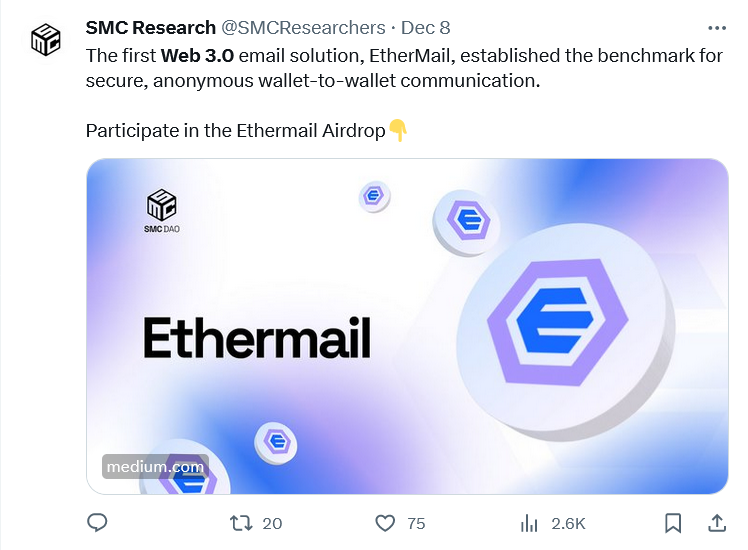
|
Getting your Trinity Audio player ready...
|
• Web 3 is a way of decentralizing the internet.
• It should interrupt the profit flow to existing web giants – and the data flow, too.
• It depends on identity, decentralization and interoperability.
READ NEXT

Web 3.0 in 2024
When many self-appointed “thought leaders” began talking about Web 3 a few years ago, there was little substance in many of the essays and pronouncements. Rife with terms that were little more than soundbites and marketing collateral, the focus tended to be on the latest and greatest du jour, be that blockchain (during the cryptocurrency boom), VR and AR (when Zuckerberg tried to justify his acquisition of Occulus) or AI (after the mediocrity engine that is ChatGPT emerged).
Over time, however, what we think of as “Web 3” is becoming apparent through deeds and actions in the form of software, systems, and attitudes that are already beginning to change the technology landscape.
There are several themes to Web 3, each of which helps create an internet that is more redolent of its infrastructure than what is currently built on top of that infrastructure today.
The three themes of Web 3
Ironically, the mechanisms by which companies like Google can siphon and monetize data are built on top of software and systems developed collectively for the good of all. The three main themes of identity, decentralization, and interoperability that make up Web 3 go against the ethos of the big technology conglomerates that currently dominate online. Yet it’s those themes that epitomize the internet’s underpinnings.

Web 3 services are beginning to emerge.
Like all technology that stands the test of time, the strands of Web 3 are being created out of a sense of need rather than being solutions desperately hunting for a problem to solve. Blockchain is often quoted in this context, a concept that the failures of cryptocurrency have irrevocably tainted. Yet the idea of a distributed database is as old as the hills, and unlike cryptocurrency, need not create a significant amount of global warming – 62 megatons of carbon this year for Bitcoin alone.
The first need, that of data ownership and personal sovereignty (which we’ll call Identity), stems from two places: cybersecurity and privacy. We all exhibit many personalities on the internet, each reflecting our activities. A person exists as an online game player, a shopper for consumer goods, a consumer of media, an employee, or an applicant for a driver’s license.
Each of these personas requires information to pass from the individual to a third party, yet what is actually needed by the third party and what is demanded or supplied is at variance. An age check in a bar doesn’t require a name and address, nor does it necessarily need a photographic element. Instead, information could be supplied to the querying party that merely confirms, with due veracity, that the individual requesting a beer is, indeed, old enough to buy one legally.
In fact, by supplying or needing to supply extraneous information to any third party, an organization or individual opens itself to cybercrime. If there were a mechanism by which identity (or any other important information) could be checked without information interchange between the two parties involved in a transaction, there would be little chance of security issues.
For example, the credibility of a company submitting an invoice to another could be proved without needing to disclose its bank details to the other party, which would reduce its attack surface considerably.
This is the concept behind a trusted network of verifiable information envisioned for Web 3 and beyond by Affinidi. A distributed, encrypted, and verified store of data and information, with data’s ownership retained by the person or company and curated on demand to those requesting information.
Despite attracting some venture capital, Affinidi’s Trust Network – an example of Web 3 technology – has designed its redundancy into its own project. A secure source of verifiable information has to be trusted, and no one party can and should be trusted to maintain, store, and protect all that information. By decentralizing the data as far and wide as possible and trusting to open, verifiable interactions, no single party gains ownership of data without the owner’s consent.
Decentralize for more individual control
Decentralization is the second element of Web 3, one that is inextricably linked with identity (and, as we shall see, with the third strand, interoperability). The centralization of data by large companies drew the period of Web 2 to a close. Web 2 was touted as the age of self-expression, where anyone could create an app, a website, a (micro-)blog, a podcast, an image, or a video and publish it. The level playing field of the internet would be the great democratizer, where the oil paintings of Mrs Dorothy Somebody could ‘hang’ in a virtual gallery next to that of the old masters.
Centralized data control now means websites are rarely found without recourse to an algorithm weighted to its owner’s business imperatives. Big media streaming services, select Podcast audiences and micro-blogs and social media posts are only disseminated to people who are identified by black box centralized software. Even email, one of the last fully open means of communication, is vetted by two or three giant corporations (ask even a seasoned systems administrator to maintain an independent mail server, and you’ll be flatly refused).
The platform, or rather, the series of platforms that represents the decentralized future in 2023, or at least one that’s best known, is probably Mastodon. Instead of a single point of control, users can choose who they wish to connect to, listen to, and communicate directly with. Instead of a curated data stream designed to ‘increase engagement’ (spend longer with the platform), Mastodon feeds comprise the user’s personal choices – as far as they’ve been prepared to make them in a relatively unstructured electronic universe. Because the underlying ActivityPub protocol runs on a distributed model, it’s practically impossible for any single entity to control what anyone sees or says.

One of the divisive elements of Web 3 is its unstructured, almost DIY aspect. It needs you to put the work in.
Opponents of decentralization in contexts like social media often turn to issues like terrorism and child protection concerns. It is impossible to control a massively distributed system, so such a system will carry unwanted materials. However, the large companies currently controlling social media and messaging platforms actively resist legislative oversight of their activities. In practical terms, Twitter and Facebook are as much above the law as affected by it and arguably less susceptible to law enforcement than the Average Joe’s Mastodon server run from their basement.
For decentralization and identity data management to be effective, interoperability is mandatory. Systems have to be able to communicate with one another across an equal playing field. With many centralized services currently operating behind what is effectively a paywall, fuller decentralization and identity management will need what is effectively a system of open networks to be utilized.
Building such a network isn’t a physical undertaking – we’re talking about a layer, in technology terms, that resides in the existing digital infrastructure.
This concept already exists in several forms, among them the India Stack. Including plans and some realization, to date, of interoperable identity and payments frameworks, the Stack’s Open Networks give a communicating person or device the same governance over their or its own communication as a decentralized identity facility grants to an owner of data.
The open network, accessible and usable by all, is already used in discrete projects, including India’s National Digital Health Mission. Unlike many new pieces of technology that seek out the most advantaged who may wish to buy it, the India Stack’s Open Network is designed to empower a collective comprising an entire population – in that case, 1.2 billion Indians. But the project goes to lengths to explain that the concept and the technology that supports its practical implementation are open for use anywhere in the world.
Conclusion

Web 3 – making billionaire gatekeepers cry?
Although the projects featured here are not necessarily “The Future,” their ethos will probably define what will be historically termed as Web 3. Unlike its predecessor, Web 2, the next generation of the internet cannot be waylaid by the commercial concerns of centralized monolithic entities like Meta and Alphabet. Its acceptance and development will spell the end of the many thousands of data brokers and advertising companies that profit from what we think of, in 2023, as everyday interchange online: the exchange of identity, money, information, and, on occasion, seasonal greetings.









